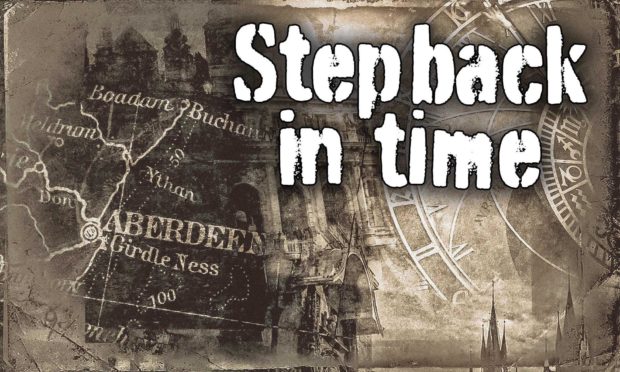Aberdeen was built from granite – and Rubislaw Quarry was where it came from.
Not only did this massive excavation provide the materials for iconic city buildings such as Marischal College, the Music Hall, Woolmanhill Hospital and Provost Skene’s House, it was exported around the word.
Rubislaw granite can be found in London’s Waterloo Bridge, the Paris Opera House, Sydney Harbour bridge and the State Capitol Building in Austin, Texas.
An estimated six million tonnes of granite excavated in the quarry’s 200 years of operation before it closed in 1971, by which time it was 145 metres deep, 274 metres long and 228 metres wide.
Join us, as we look at Rubislaw Quarry over the years.
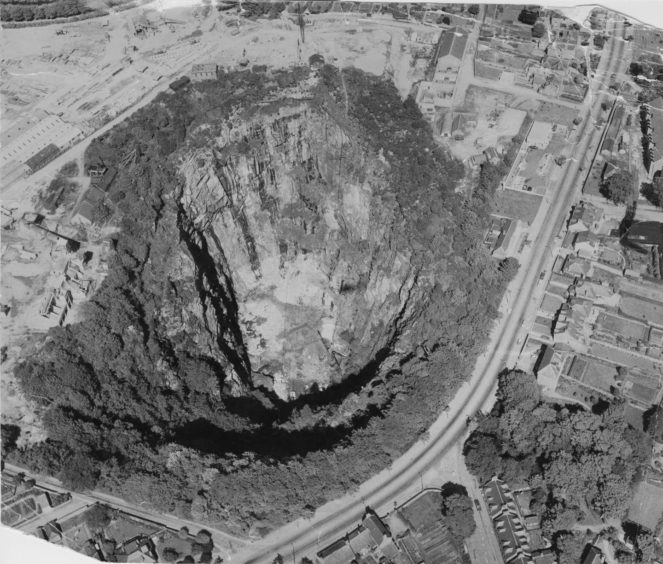
The sheer scale of Rubislaw Quarry can be see in this photograph from 1971, the year it closed down after around 200 years of operation. At the time, there were suggestions it could be turned into a rubbish tip for the city.
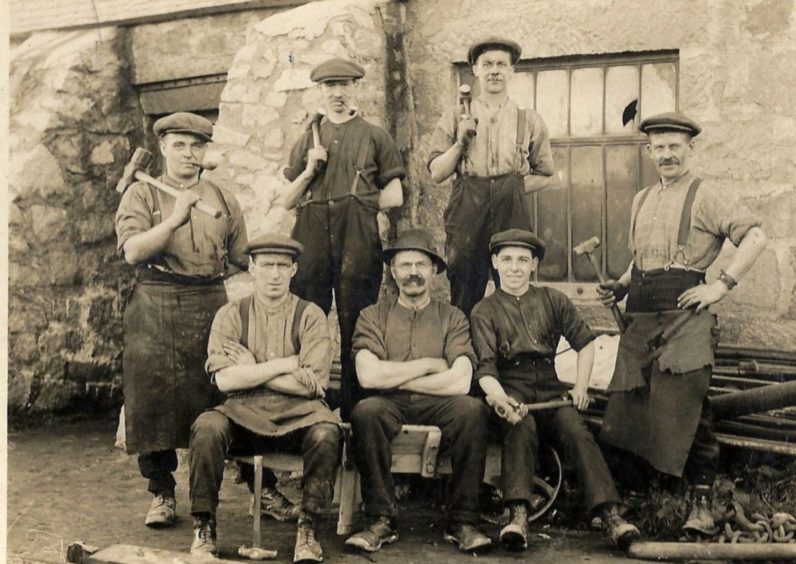
Quarrymen were a tough breed, carving the quarry out of the ground, often dressing it before it was dispatched around the world. This photo from 1927 shows some of the men who helped Rubislaw build Aberdeen and the world.
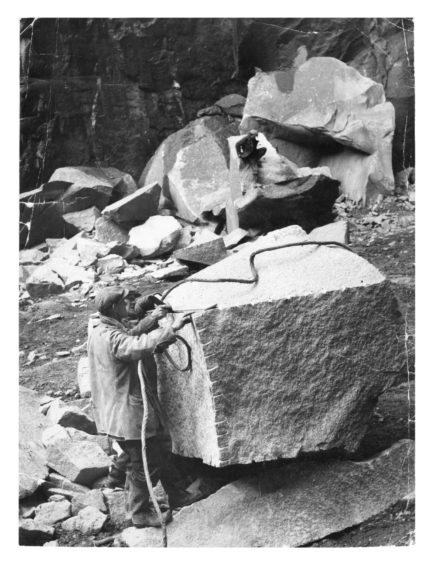
Quarry manager John Ross and Robert Murison measure an enormous block of granite at the foot of Rubislaw Quarry in 1964. It is a proud boast of the Granite City that “the half o’ Aiberdeen came oot o’ that hole”.
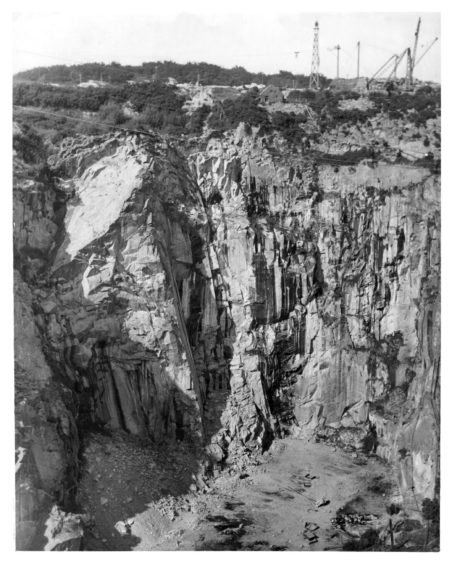
Rubislaw Quarry was opened in 1740 and by the time this photo was take in the 1930s it was already a major and awe-inspiring feature on Aberdeen’s landscape in the elegant West End.
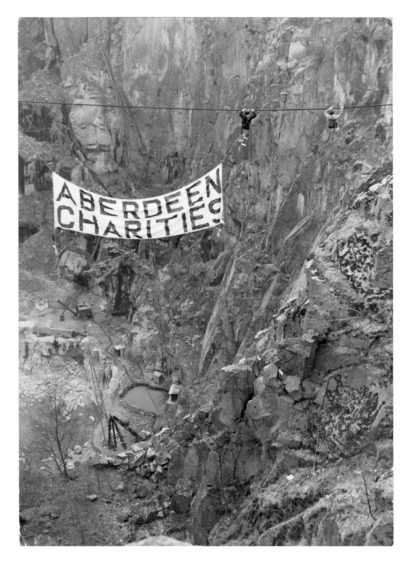
Rubislaw Quarry has always been a magnet for stunts and protest, like this one in 1966. Jerry Light and Alan Fyffe hang grimly on to the wire rope as they make their perilous journey hand by hand along the wire rope to terra firma. But their task was completed and the charities’ banner dangles 100 feet high in the air over the quarry.
